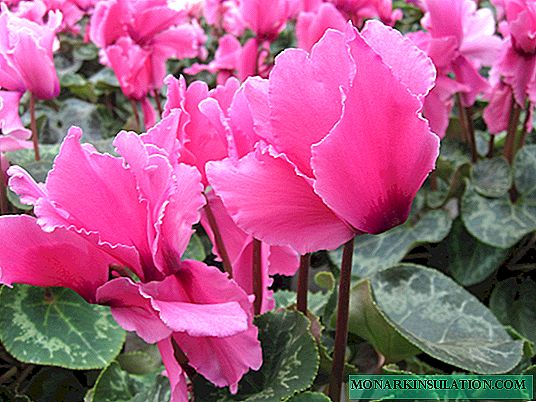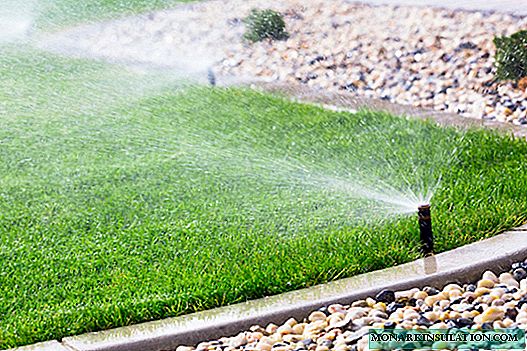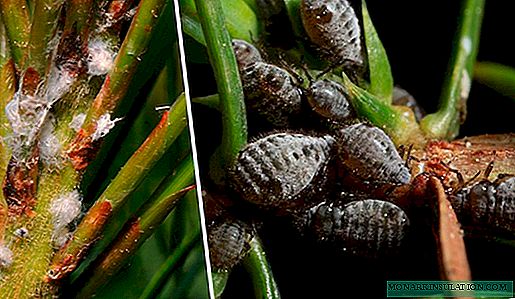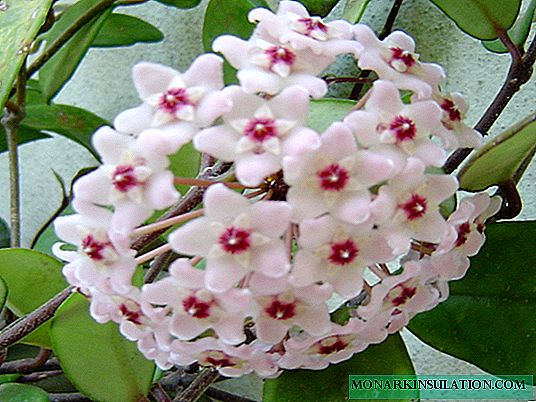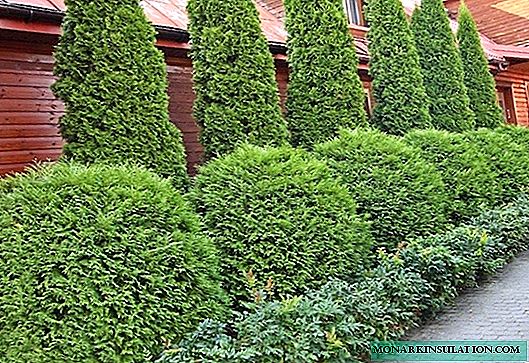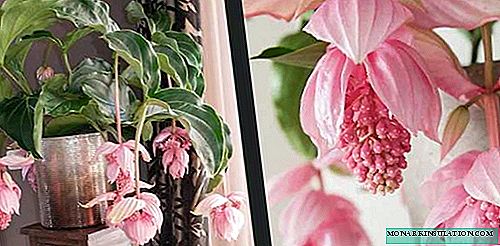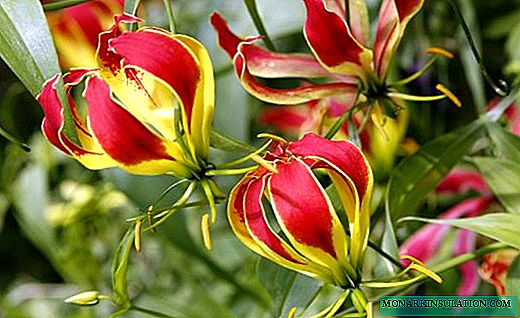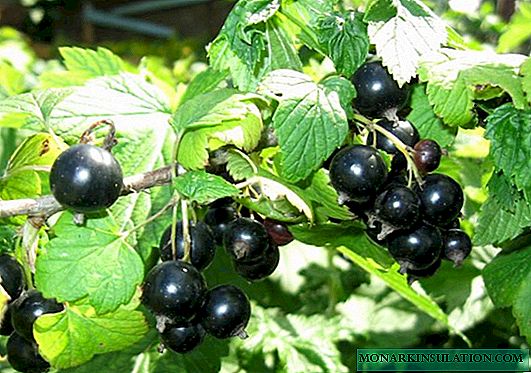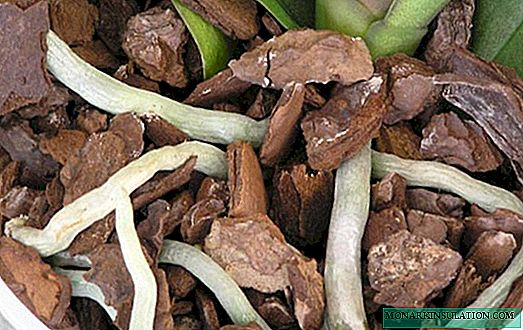A substrate for orchids began to appear in large numbers on the flower market. It is already crushed to the desired state, as well as microelements necessary for normal development. The assortment includes not only sphagnum and bark for orchids (the most affordable of cheap soils), you can also find coconut chips, soils made from exotic plants.
Despite all the delicacies presented in flower shops, the best option would be pine bark for orchids. It is cheap in cost, the plants in it feel good, if possible it can be prepared independently. It is only necessary to study in detail the nuances of the workpiece.

Harvesting bark for orchids
It is necessary to update the substrate:
- after buying the plants in the store;
- with a planned transplant - it is necessary to transplant 1 time in 2 years;
- upon detection of root diseases or pests;
- after examining the plant, seeing that the water began to stagnate, and the substrate had already completely decomposed.
Types of Orchid Bark
There are enough types of soil for plants, many flower growers prefer to use a proven substrate. One has only to figure out which bark is better for orchids that are in certain conditions.
Most often, flower growers in Russian latitudes use pine bark as a substrate, some use spruce. Also, there are specialists who use the bark of cedar, cypress or thuja. Very rare gardeners harvest the bark of deciduous trees (acacia, poplar, oak or elderberry) as the basis for the soil. Some orchidists use a mixture of the bark of several tree species, since each of them contains a different amount of useful and necessary elements for the orchid.
Pine bark
You can buy ready-made pine bark for orchids in the store, but if you can independently harvest it, you can easily collect it in the nearest forest, the main thing is to be guided by the rules of choice.

Pine Orchid Bark
Collection can be carried out at any time of the year. A fallen tree should be chosen as the basis for the substrate.
Useful In living pine trees, resins are found in the bark, which can harm plants. Collection from dead trees or crumbling bark does not harm both the pine tree itself and the flower when grown.
It is worth paying attention to pieces of bark, if there are signs of a bark beetle on them - they should not be collected, since soon the substrate on this basis will become unusable.
Before collecting a variety of pieces for the soil, you should look at the substrate of your plants. This will help to understand what kind of bark is needed for an orchid. No need to collect large pieces (they will have to be crushed), small fragments from 1 to 2 cm are needed.
Spruce bark
For planting orchids, spruce bark is used less often than pine. This is due to the fact that there are more resinous substances in it, moreover, it is harder to collect. To prepare bark from spruce, it needs to be carefully cut from wood, and this is not so easy.
For harvesting, it is necessary to find a recently felled tree, with small movements to cut small fragments of bark from it. If wood comes across, it needs to be removed, since it is not needed for growing Phalaenopsis.
Home cooking options
Regardless of which bark can be used for orchids, it must be prepared, prepared, and then used as a substrate.

Bark preparation
Instruments
Before engaging in harvesting work, you should prepare tools for harvesting the bark, then for processing it. To go to the forest you will need:
- Secateurs;
- Small capacity (bucket, bag, bag);
- Knife (you can take 2 knives instead of a pruner: with long and short handles);
- Shoulder with a rounded edge (preferably wooden).
For processing, you will need several tanks (high and low). It all depends on which method is chosen for disinfecting the cortex. If digestion, you need to prepare a galvanized bucket, if drying, you can use a baking sheet covered with foil.
Material preparation
Now you need to understand the question: how to prepare the bark of pine and spruce for orchids? All brought bark fragments must be double-checked, shaken off insects, then proceed to grinding to the required size (if large pieces were prepared).

Orchid bark preparation
Each individual piece is cleaned of dust from the hands, the remainder of the wood is removed from the inside, as well as all layers that are easily peeled off, then areas where the bark began to decay are cut off. Prepared pieces are sorted by size.
Brewing and drying
Before applying the bark as a substrate for planting orchids, it is necessary to carry out its preparation. First you need to boil it over medium heat in water for an hour. Before cooking, pieces are laid out on the bottom of the bucket (pot), then poured with water so that they are completely immersed in the liquid. After that, the crust is pressed by a stone. This is done so that during cooking the pieces do not float. After the cooking time has expired, the bucket must be removed from the fire and given time to cool the liquid in which the bark is located. After that, the pieces are filtered, time is given so that they drain well.
After that, you need to dry the future substrate. The bark is laid out on a flat surface (it is desirable that it is a balcony or a porch) and left for several weeks (from 3 to 5) for complete drying under natural conditions. Periodically, pieces must be checked, turned over and dried up taken from the total.
Useful Some gardeners do not recommend the boiling out of pine or spruce bark, believing that this will lead to the fact that because of this, all useful microflora will die in it.
There is another good option to disinfect the substrate, in which bark it is planned to plant an orchid. To get rid of insects in future soil, it is necessary to place pieces of bark in a shallow container, and put it in a warm oven. At temperatures up to 100 degrees, hold pieces in it for 5-7 minutes. The oven door must be open. This procedure should be repeated 3-5 times. After that, each fragment of the cortex is checked, cleaned by hands of exfoliating parts and sorted.
Orchid planting
The main way to grow these wonderful flowers is to grow them in pots. This is the most convenient method, since the roots of the plant are inside the pot, and not outside, so the flower does not suffer from frequent drying of the substrate. It is best to plant orchids in plastic containers (transparent and translucent options are made for them), it is desirable that they have holes in the bottom (they are needed so that the plant is ventilated and that excess moisture drains, otherwise the roots will begin to rot and the plant will rot will die). Orchid cultivation in other containers is not welcome, as they are uncomfortable in massive but narrow pots.
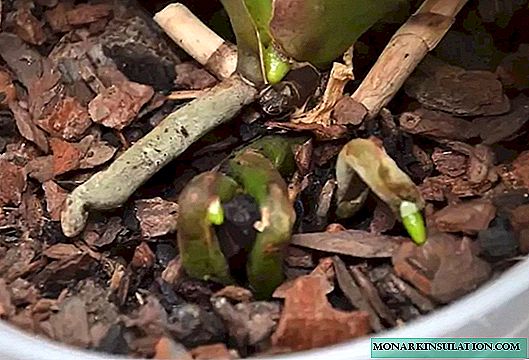
Orchid planting
Important! Orchids are flowers that do not like crowding and the absence of ventilated holes.
The second type of orchid cultivation is tree planting. These flowers in an exotic country lead an epiphytic lifestyle, that is, they can live on trees, taking their roots down. Such flowers can be grown at home. How to do it? You need to take a board or bar from any tree (it is very important that the breed is not resinous). The plant is temporarily attached to the bar so that it is fixed on it. Over time, the orchid will twist the wood on its own and become attached to it. In order for everything to happen without difficulties, it is necessary to provide decent care for the plant, otherwise it will not take root and die. In order for the flower to live in this situation at home, you need to constantly use a spray gun that will regularly spray the beam (if it is not moistened with water, the orchid will not survive), and also maintain a constant temperature from twenty to twenty-five degrees Celsius.
Which bark is better to plant
Despite the fact that there are enough bases for the substrate, many experts believe that it is better to prepare it from a pine bark. It is better in quality, compared with other options, it has fewer tarry substances than spruce, and it also decomposes most slowly.
It is possible to apply soil for cultivation of orchids on the basis of various breeds. The main thing is to study the methodology for preparing each of them. In order not to create unnecessary troubles for yourself, it is worth taking care and clarifying with the sellers: which bark is needed for transplanting the orchids that they purchased. This will facilitate the process of harvesting the substrate and caring for the plant.

